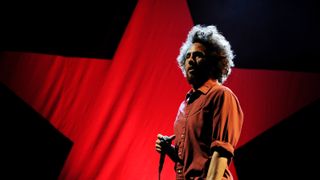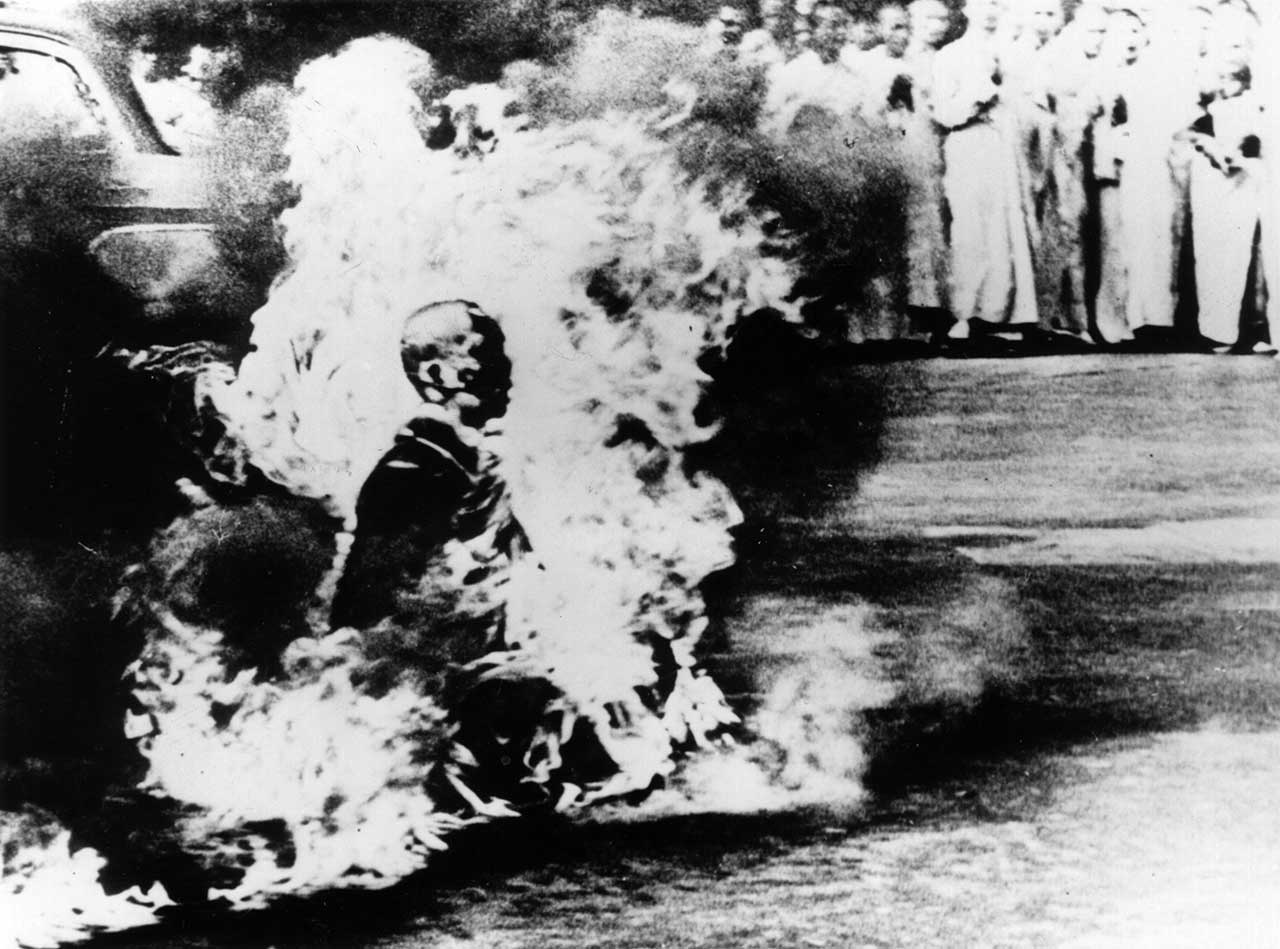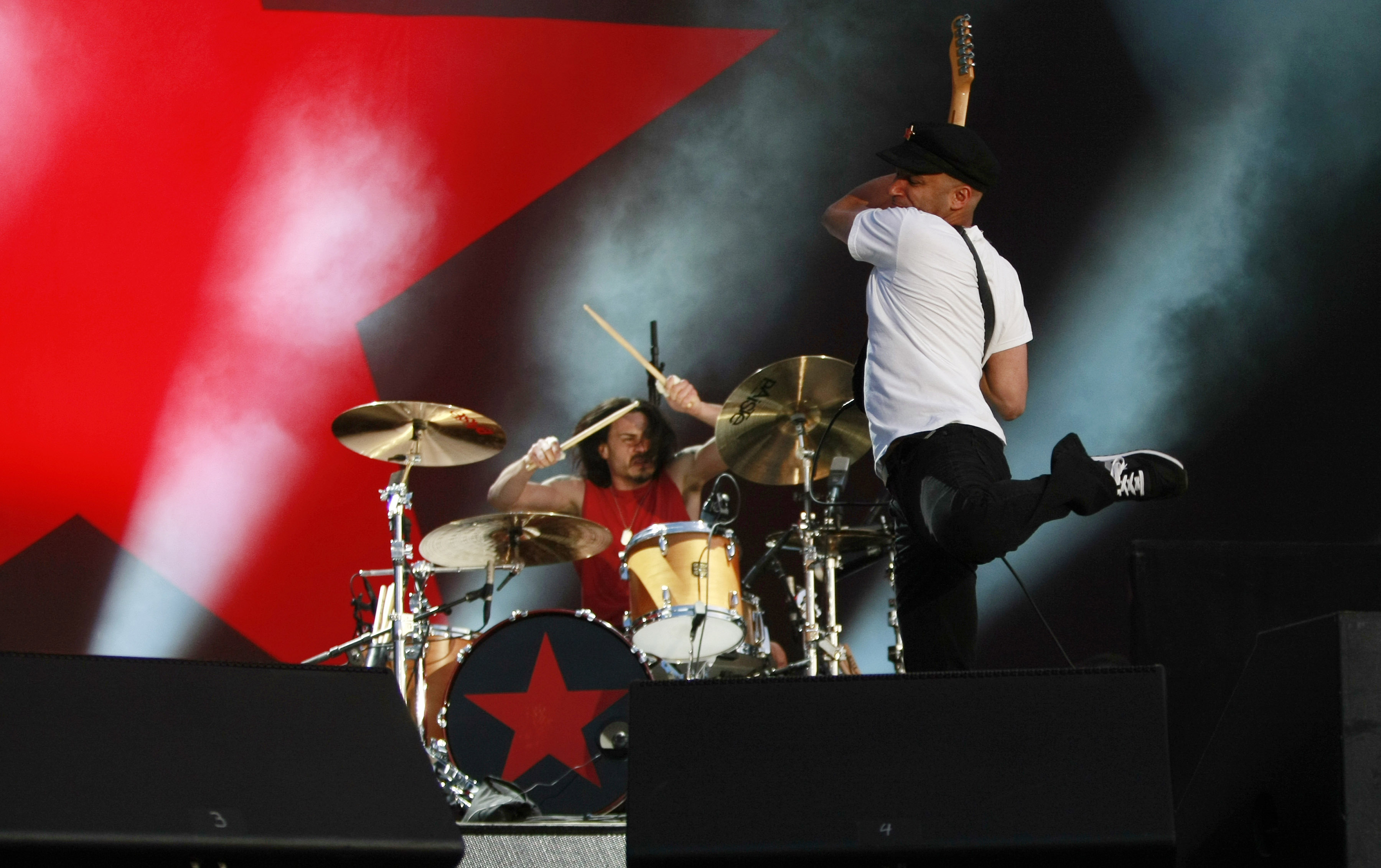Chosen Life Rage Agains the Machine
Bring The Noise: How Rage Against The Machine Inverse The World

At the beginning of the 1990s, sociologists turned their gaze upon a new generation of teenagers and immature adults and identified this emerging social grouping as 'Generation Ten', a label lifted from Canadian novelist Douglas Copeland'southward 1991 best-seller Generation X: Tales For An Accelerated Culture.
Extrapolating upon the attitudes and social manners exhibited in Copeland'south book, in Texan film director Richard Linklater'southward honour-winning indie sensation Slacker, and in 1991'due south most talked-about album, Nirvana'southward Geffen Records debut Nevermind, cultural commentators argued that the youth of the 1990s were cynical, apathetic, self-centred and jaded, over-educated, nether-employed, disillusioned and politically disenfranchised.
And and then four young men from Los Angeles released the well-nigh confrontational, provocative, politicised and impassioned rock album of the decade and blew every lazy, clichéd, prejudiced assumption virtually their generation away.
As a musical guerrilla cell, Zack de la Rocha, Tom Morello, Tim Commerford and Brad Wilk were determined to make a difference. A multi-racial, outspoken, flammable collective, Rage Confronting The Machine were non the offset band to seek to meld the worlds of difficult rock, punk and hip-hop, simply in their assimilation of influences from Led Zeppelin (riffs, dynamics) Public Enemy (polemics, production), The Clash (imagery, integrity) and Gil Scott-Heron (rhymes, radicalism), the quartet fashioned an explosive cocktail generating shockwaves which would be felt across the earth.
Released six months after the ferocious riots which engulfed their hometown, their self-titled debut anthology is an incendiary, revolutionary call to arms which encouraged independent idea and radical deeds.
With sleeve artwork featuring the Pulitzer Prize-winning photograph of the cocky-immolation of a Vietnamese Buddhist monk, in Saigon in 1963, the 10-track anthology dealt with inner-city violence, poverty, racism, corporate malpractice, the abuse of power, institutionalised bigotry, lies, injustice and oppression. And while reading like an epitaph for the American Dream, it sounded thrillingly like a manifesto for new world disorder. Here, finally, was a ring to believe in.

In class as well as content, Rage Against The Auto represented a finger in the face of conformity. When they appended the line 'no samples, keyboards or synthesisers used in the making of this tape' to their debut anthology'southward sleevenotes, information technology was both a kiss-off to the slick, polished sound of '80s stone, and an invitation for listeners to steel themselves for a new, innovative musical palate that would revolutionise rock.
Tom Morello's guitar tones occupy a sonic space somewhere betwixt 'police siren' and 'ticking time bomb', whirring and churning in perpetual set on fashion, while de la Rocha spits righteous, incandescent confined like a street-corner preacher, midway betwixt poetry, prophecy and pre-apocalypse threat.
Allied to the spacious, difficult-funk rhythms assembled past Commerford and Wilk, this sound and fury created a fresh, electrifying musical vocabulary which would give vocalization, in years to come, to anybody from Deftones and System Of A Downwards to Muse and Gallows.
Evidence that RATM were non content merely to be a musical force nevertheless was evident in the 'Thanks for Inspiration' department of their debut album's sleevenotes, which gave shouts out to Black Panther leader Huey Newton and IRA hunger striker and elected MP Bobby Sands alongside musical activists/artists such equally Fugazi's Ian MacKaye, The Clash's Joe Strummer and Public Enemy frontman Chuck D.
In his sleevenotes to the 20th anniversary re-issue of Rage Against The Auto, Chuck D, soon to be found fronting Prophets Of Rage, hailed the quartet for providing a soundtrack for "rebellion for the underclass".
In their original decade together the band championed numerous causes for social justice, whether information technology was Harvard graduate Morello forming the Axis Of Justice with Organization Of A Downward frontman Serj Tankian or de la Rocha working on the basis with the Marxist Zapatista rebels in Mexico or donning a suit and tie to appear before the United nations' Commission on Human being Rights In Geneva to call for a new trial for Mumia Abu-Jamal, the journalist and former Black Panther who spent 30 years on Death Row later being convicted, controversially, for the 1981 killing of a Philadelphia police officer.
Critics may have sneered at the ring'south fervent conventionalities that music could empower, educate, and effect change, but the quartet were always prepared to translate sloganeering into grass-roots activism – their determination and religion perhaps best illustrated in de la Rocha's lyric on Guerilla Radio: 'It has to start somewhere / Information technology has to start sometime / What better identify than here / What better time than at present…'

For a decade, Rage Against The Machine were untouchable as the most powerful and important stone ring on the planet, uniting metal, punk and hip-hop fans to their cause. Over the course of three albums – that peerless 1992 debut, 1996's Evil Empire and 1999's The Battle Of Los Angeles – they created a torso of work that sounds as potent and inspirational equally information technology did upon its initial release, then bowed out with a covers album, 2000's Renegades, which in showcasing songs by Bruce Springsteen, Bob Dylan, Pocket-size Threat, MC5, Afrika Bambaataa and Eric B. & Rakim among others, served as the perfect gateway for rock fans to check out the artists who laid the blueprints for their sound and vision.
Their reunion from 2007-2011 was unimpeachable, both a victory lap for their pivotal role in taking 'culling' stone into the mainstream, and an acute reminder that the issues which fired them a decade before remained both relevant and unresolved.
That, en route, they managed to give a bloody nose to Simon Cowell, via an cyberspace-driven campaign to install Killing In The Proper noun as the Britain's Christmas Number One unmarried in 2009, was a nice bonus, "a wonderful dose of anarchy" equally Tom Morello recalled.
The affect of RATM however resonates with power and clarity in modern music: their legacy lives on in Refused and Against Me!, in avowed fans such every bit System Of A Down and The Prodigy, in Kendrick Lamar and Death Grips, in any artist who'south raised their voice to say 'Fuck you, I won't do what you tell me.'
Proven past their ability to garner both raves and rage when, almost 30 years since that incendiary debut, they are billed to headline at Reading and Leeds festivals, Rage Against The Machine'due south music, spirit and soul will forever live on, uncompromising and uncompromised. A vocalisation for the voiceless, they shall never be silenced.
Source: https://www.loudersound.com/features/how-rage-against-the-machine-changed-the-world
0 Response to "Chosen Life Rage Agains the Machine"
Post a Comment